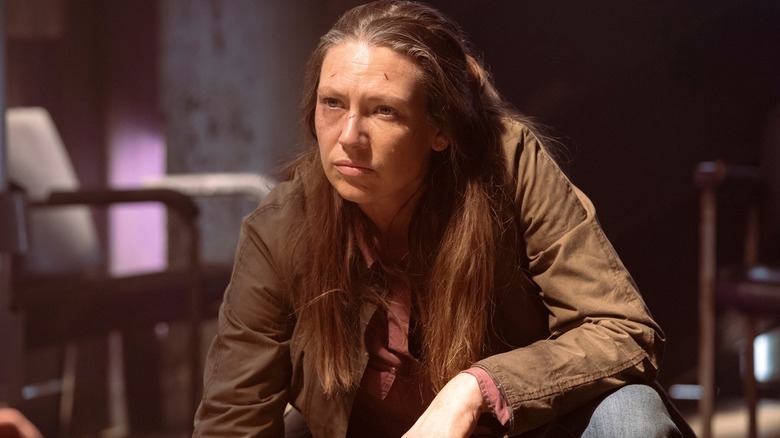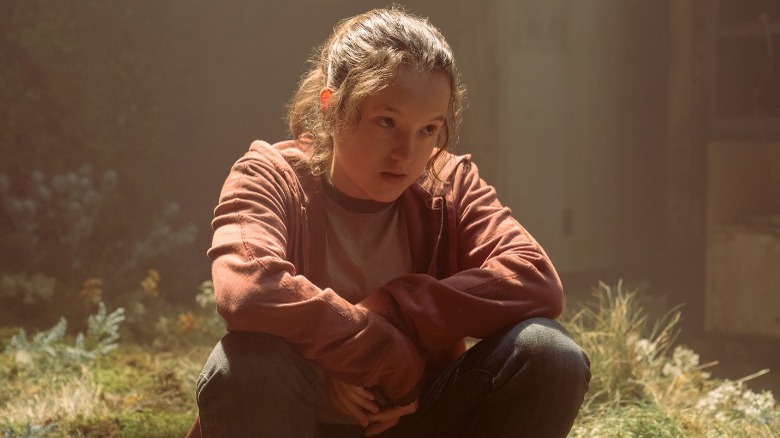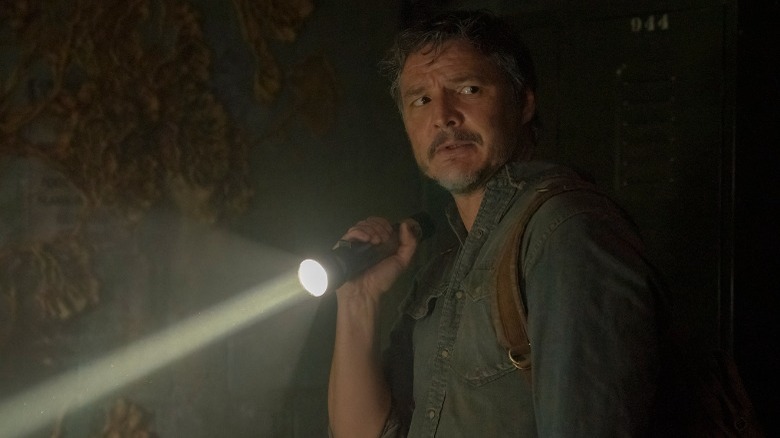How The Last Of Us Cinematographer Avoided HBO's Too-Dark Curse [Exclusive]
When "Game of Thrones" aired its climactic eighth season episode, "The Long Night," the response from fans wasn't exactly what the show's creators might have expected. Instead of cheering for Arya Stark's big moment or mourning the deaths of the characters who didn't make it through the battle for Winterfell, fans were caught up on something else entirely: How darn dark it all was.
Lighting is a delicate art form, and in recent years, many prestige TV shows have fallen into the habit of under-lighting night scenes or using muddy day-for-night effects. HBO's latest highly anticipated series, "The Last of Us," features a few key scenes set under the cover of darkness, including several shot by cinematographer Eben Bolter. The filmmaker served as director of photography on the show's third, fourth, and fifth episodes, and provided additional photography throughout the season. Along the way, he and his team worked diligently to figure out how to avoid some of the problems that have plagued so many shows, as he said, "particularly with this network."
'Electricity is a finite resource in this world'
Bolter spoke with me in a wide-ranging interview for /Film, and I asked him about how he side-stepped the lighting issues we've seen on so many otherwise-great series. The answer involves finding authentic motivations for light sources, and perhaps even more importantly: Planning, planning, planning. Bolter said that the night scenes involved "an awful lot of planning and an awful lot of subtleties," and that the team was allowed to "be creative within those constraints" of the post-apocalyptic world of the show. "The obvious constraints for 'The Last of Us' are to do with light sources," Bolter explained. "Because you're dealing with — where they have electricity — it's off of generators, and it's precious, and electricity is a finite resource in this world."
He continued:
"You're going to be dealing with 20-year-old fixtures, and dodgy light bulbs, and not much electricity when you have it. The rest of the time you're going to be dealing with natural light, so you've basically got the sun, you've got the moon, you've got flashes of lightning. You've maybe got a fire, but there's not many motivations for light sources, you know?"
Bolter contrasted the series shoot to something set in an urban environment, like Hong Kong, where artificial light sources are plentiful. Different episodes required different conversations about the lighting; episode three, for example, includes a seasonal change, while episode five features some major moments shot in moonlight. Regardless of the individual sequence, however, the common denominator seems to be plenty of planning and "reference gathering." According to Bolter, "it was a lot of conversations about, 'How can we create a cinematic scenario? How can we use the elements that we have, use the minimal light sources, torches, lanterns, sun, moon, fire?'"
'How can we create a environment that feels completely real?'
The team behind "The Last of Us" took inspiration from these natural light sources, but still had to create a set that would mimic them without being beholden to sudden weather changes while filming in extreme conditions, including in Alberta, Canada. The question, according to Bolter, was: "How can we create a environment that feels completely real, feels like we just walked and this is how it happened to be, and yet is completely controlled so we can shoot in it all day long and it's not going to be changing all day?"
"I knew as long as I had a hard backlight and a really soft, subtle toplight," Bolter said of one particularly tough-to-shoot night-time sequence in episode five, "it's always going to feel dark and moonlit, but we're always going to have definition to be able to see what's happening and see the characters." If "The Last Of Us" successfully avoids the pitfalls of the severely underlit shows before it (I will say, it looks great on my screeners), it'll be because of the amount of careful preparation and case-by-case problem-solving that seems to have gone into some truly tricky lighting setups. "Talking about, 'How dark is too dark?' is really a subjective thing," Bolter admitted, "But we did want to present a moonlight that objectively you could see what's happening. That was important to us."
"The Last of Us" airs Sundays at 9 p.m. ET/6 p.m. PT on HBO and HBO Max.


